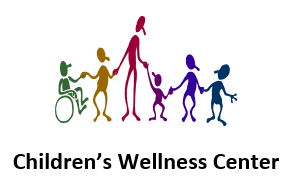Cough, Croup, Whooping Cough
Coughs
Coughs are very common in children. While cold viruses are the most common causes of cough, there are many different conditions that can cause coughs – asthma, reflux, sinus infections, pneumonias, and vocal tics to name a few.
What You Can Do at Home
If your child has typical symptoms of a cold along with a cough, you can try humidified air (steam shower or cool mist humidifier) as well as honey or a honey based cough medicine in children over 12 months old. Most coughs related to viruses will improve within 10-14 days even if they are not all the way gone.
When To Call Your Pediatrician
If your child has a cough for more than 10-14 days without improvement, schedule an appointment during office hours. If your child has a cough but does not seem to have other cold symptoms, call to schedule an appointment so we can help you figure out why they are coughing.
When To Go To The Emergency Room
Any child with difficulty breathing should be seen in the emergency department. Signs of difficulty breathing include rapid breathing, flaring of the nostrils, sucking in with the belly, between the ribs, or at the base of the neck with breathing.
It is impossible to cover all the possible causes of cough here, so if you are not sure what to do about your child’s cough, please call our office. Below we have included some information on two different infections that can cause severe cough in young children.
Croup
Croup is always caused by a virus. Croup often has the same symptoms as a regular cold – fever, congestion, runny nose – plus a barky cough. This cough is caused by swelling in the airway. It is typically tight, dry, and sounds like a seal. It is often worse at night. Children with croup may have a hoarse voice or cry, and when the airway swelling is severe, they can have noisy breathing which we call stridor.
When To Call Your Pediatrician
If you think your child has croup, they should be seen in the office. They may need a steroid to treat the airway swelling.
What You Can Try At Home
If your child has milder symptoms, there are treatments you can try at home while waiting for your office appointment. Cold, moist air is often helpful to relieve airway swelling. Try a cool mist humidifier or go outside to breathe the cold night air in the winter. If it’s warm outside, you can let your child breathe the cold mist from the freezer. Make sure they are drinking plenty of fluids, and do your best to keep them calm since croup is often worse when they are crying or very active.
When To Go To The Emergency Room
If they are struggling to breathe, grunting, or have noisy breathing even when they are calm, they should be evaluated in the emergency room right away because these are signs that the airway swelling is severe.
Whooping Cough
Pertussis, or whooping cough, is a highly contagious illness caused by the bacteria Bordetella pertussis. It is spread from person to person, usually through coughing or sneezing. The bacteria, which only infects humans, releases toxins which damage the respiratory tract.
What Whooping Cough Looks And Sounds Like
Pertussis usually starts with symptoms that are identical to the common cold: congestion, runny nose, mild cough, fever. After a period of 1-2 weeks the cough becomes severe. Often children will have coughing “fits.” They may suck in a deep breath after these fits causing the “whooping” noise that gives the disease its name. Many children cough so hard that they vomit. Young infants may have only mild cough or no cough at all but stop breathing. Older children and adults often have less severe illness with a lingering cough. They can go undiagnosed and spread the disease to more susceptible younger children. Symptoms can last 10 weeks or longer.
Take Whooping Cough Seriously
Pertussis is a very serious illness. In addition to the symptoms mentioned above, children may develop pneumonia, seizures, encephalopathy (disease of the brain) and even die as a result.
Treating Whooping Cough
Pertussis is diagnosed with a nasal swab in the office and treated with a course of antibiotics. Unfortunately, antibiotics are only effective in limiting the time a patient is contagious. Once the cough is severe, there is little that will help relieve symptoms other than time.
Prevention Is The Best Treatment
The most effective weapon in the fight against this illness is prevention. The whooping cough vaccine is a standard part of childhood immunizations. Make sure your children are up to date, including older children who should receive a booster, called TdaP, at age 11 and then every 10 years. All adults who care for small children (moms, dads, grandparents, aunts, uncles, babysitters) should also receive the TdaP vaccine because older siblings and caregivers are almost always the source of infection in younger children.

